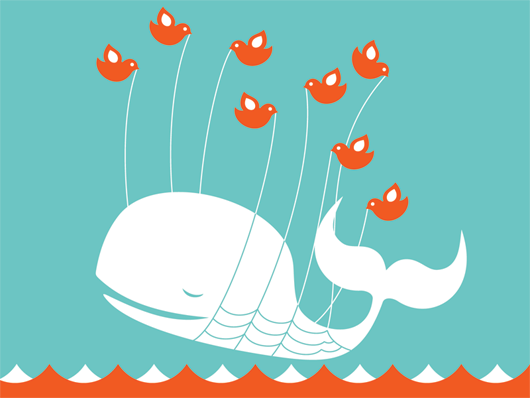
In the early days of Twitter (circa 2007-10), after it’s big splash at SXSW, there was an intrepid group of HR early adopters of this exciting new tech. Those were the halycon days of #HRHappyHour (show and Twitterchat – every Thursday night!) and #DTHR (show and Twitter chat – every weekday lunch hour). We were on a first name basis with the “Fail Whale” and were able to send tweets and DMs via SMS.
Within a few years, HR Conferences (slow to get with the program but they got there!) started to incorporate conference hashtags and put together social media teams to amplify their events while “on the ground.” Loads of #HRTwitter’ati descended en masse on the Annual SHRM Conference, the HR Tech Conference, ERE and other gatherings.
With Tweetdeck running on their laptops and regular Twitter pulled up on their phones, these dedicated folks pushed reams of HR content out to the unwitting public. I’ve always been a big fan of following event hashtags for content from speakers or hearing the latest industry news. Not to mention I always enjoyed sitting in the audience and capturing, in 140 characters or less (pre-280), my impressions.
The Pandemic and #HRTwitter
When the pandemic arrived, of course, in-person events went virtual. Attendees at these on-line conferences quickly found themselves in a sealed chamber: sitting at their desks, “virtually” wandering from session to session, stepping into the “Expo Hall” and chatting with other attendees – not in the hallway but via the session stream.
The event Twitter stream/hashtag was effectively killed off. During events no one toggled between Hootsuite and the event platform to post witty bon mots; all those conversations happened within the platform. Granted, this allowed MORE people (the Twitter-less) to participate but the vibe at events became totally different.
Yet, #HRTwitter carried on with big conversational streams and various chats such as #HRSocialHour and #MercerChats drawing big audiences with strong interaction. #RecruiterTwitter, always a good time, was poppin’.
And then Elon Musk purchased the platform on October 27, 2022.
Post-Elon
A number of #HRTwitter OGs straight-up left Twitter. Some headed off to Mastodon, Post, and parts unknown. A fair number began to use LinkedIn as their primary channel for the posting of content and conversations. Facebook, for those who hadn’t already vacated the house of Zuckerberg, still remained a gathering place for individuals and groups.
But then, in January of this year, Elon got rid of the “Latest” option on accounts; this had always been the best option to see the newest tweets/most engaged with tweets from the accounts one follows. (This was where, I dare say, many of us resided). In its place we got “For You” (often filled with garbage white nationalist users and bots) and “Following” (better than “For You” but still clunky and lackluster).
Now, as he announced yesterday, beginning on the 15th of April, Twitter will only promote paid subscribers’ tweets, and non-subscribers will not be allowed to vote in polls.
The death knell is getting louder.
As for me….I’m hanging in and hanging on until the bitter end. Twitter was, for the longest time, my favorite channel. It’s where I’ve gotten my news and found new folks with whom to connect and share. I still post and converse with others every day.
But the decline has been swift and depressing for #HRTwitter.
Will the last one standing please feed the Fail Whale?



